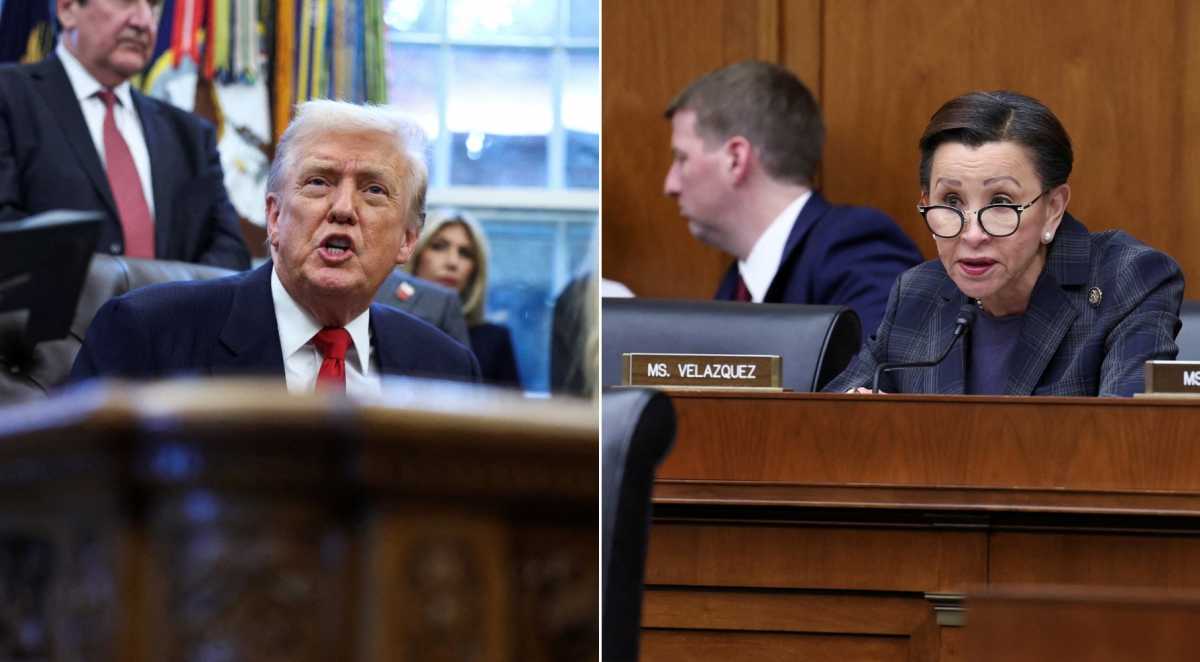Jazz music blared Sunday from the steps of the 200-year-old St. John’s Lutheran Church on Christopher Street in the West Village — with jovial tunes permeating down the street and into the ears of passersby — as the congregation celebrated its house of worship’s bicentennial.
The church celebrated all weekend with an open house for people to view the sanctuary’s historic artifacts, discussions about the history of the church, concerts, worship, and a “Celebration of Sacred Space” program which included music, reflections, poetry and a theatrical performance.
The bicentennial was an ode to St. John’s history, where it is now and what the future holds.
The church was built in 1821, when the nation was just 33 years old. At its birth, the farms and homes surrounded the house of worship; today, it’s a fixture amid the concrete jungle.
“It’s awesome to think that this space has been around for 200 years and has constantly provided a safe space for anyone who needed it in the community and continues to do so,” said Melinda Lando, president of the congregation.
Erik Bottcher, Democratic nominee for the City Council’s 3rd District seat, said that in today’s world, it’s more important than ever to have places for people to gather in person and to come together as one and that’s what the church provides.
On behalf of the New York City Council, Bottcher presented a proclamation to the church commemorating the 200-year anniversary during the “Celebration of Sacred Space” celebration.
The celebration attracted people from the neighborhood who have never attended the church before. Several stopped to listen to the outdoor jazz concert and read about the church’s 200 year history.
“It’s great. I just learned this was here for 200 years,” said Dylan Reider, who was going on a run in the area.
More than an old church

Bottcher said St. John’s is more than just a church.
“It’s a community center, a neighborhood gathering space and it’s been a refuge for the lost and marginalized people of our community,” Bottcher said. “For 200 years, it’s hard to quantify the amount of people it’s served and helped but it’s a cause for tremendous celebration.”
When St. John’s began with a small congregation of German immigrants in 1855, the church served as a place for German speaking immigrants to connect with their culture and share their language. Today, it has grown to be an inclusive church that embraces the arts and culture of the West Village.
“Everybody is welcome,” said Mark Erson, the pastor at St. John’s Lutheran Church. “The contrast is, when it first opened, everyone was the same, and now it’s all about diversity and we want to reach out in as many ways as we can to serve as many diverse communities as we can.”
The church engages with the West Village community in various ways.
It has a rich connection with the arts community: several theater companies in the area are in residence at the church and use the space to rehearse, a set for a play is hidden behind the altar on stage, the church hosts singer songwriter open mic nights, poet open mic nights and a gospel showcase in which ballroom performers perform live gospel music.
Through these events, people are able to see themselves represented in church, Erson said.
“We are saying, ‘be yourself and bring all that you love about your culture and about your expression,’ and we have a place for you,” Erson said.
St. John’s director of music Janet Sora Chung, who played the Goldberg Variations by J.S. Bach on the church’s 1961 manual Austin Organ during Saturday’s celebrations, said she can’t help but think of the many ways the sanctuary has served the community, and the varied meanings and functions of the space for the people who have come through the doors.
“From farmland, to the Stonewall riots, to 9/11, our sanctuary has seen huge change, and through it all, has managed to be a place of rest and restoration,” Sora Chung said.
Over 200 years, the church has not only changed socially but structurally.
The pews are no longer attached to the floor and wood flooring has replaced carpet to make it easier to move the pews around. The exterior has also been restored through the years, but the major changes have taken place inside to reflect a modern church.
“We’ve made the church more welcoming,” said Carmen Fedrik, who has been a member of the church since 1974. The pews are movable, and the church is used by more people for a variety of things, she said.
Fedrik started attending the church, by accident, 47 years ago. She was new in the neighborhood and wanted to find a home church. She was walking to attend an Episcopalian church in the neighborhood and took a wrong turn. She ended up at St. John’s and has been coming ever since.
Fedrik said that while the church was already inclusive when she first started to attend, it has become more inclusive throughout the years as more people have come to see that all are welcome at St. John’s.
“Happy birthday St. Johns,” said Daniel Neiden, leader of Village Yontiff, who spoke during the “Celebration of Sacred Space” celebration.





































